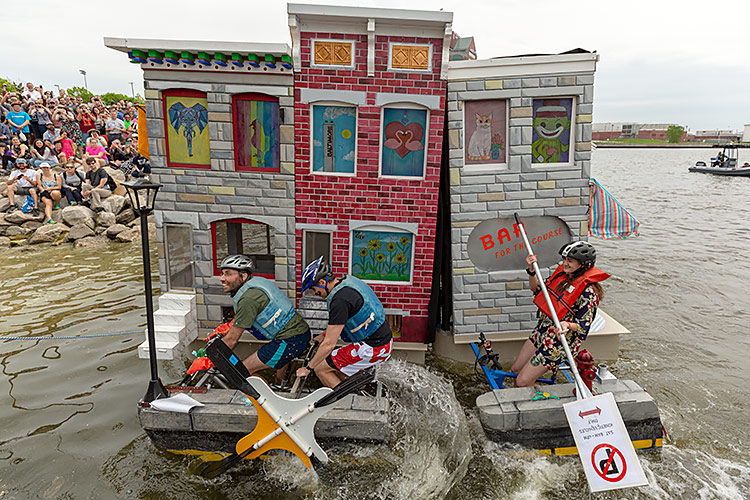Angela N. Carroll is writing history. The Maryland native went to graduate school in California for digital arts and new media (with a focus on experimental cinema and animation) and now teaches film and moving images courses at Stevenson University, but lately Carroll has devoted herself to writing about contemporary Black artists. Carroll has modeled her career after David Driskell, the artist/scholar who felt a charge to contextualize and write into history his Black contemporaries in the 1970s. Like Driskell, Carroll acknowledges the complicated feelings that come with putting on hold one’s studio practice to focus on writing about someone else’s. Animation is not a diverse field and she wants to get back to it, but there is a lot she wants to accomplish with her writing, too.
For Carroll—a regular contributor to BmoreArt—contemporary writing about Black artists has to move past tokenism. She explains that inclusion “can’t be about a checked list of diversity.” Pushing for more than representation presents a major challenge because art history, as it has been recorded, “is primarily the history of white men. The contemporary moment tells us that everyone’s contributions are important, but as a result of [this historical imbalance] there are deep fissures in the way we understand one another,” Carroll says. “The way we understand artist history is through these white geniuses, but what is Picasso without the African artisans” his work was based on? The central question that Carroll returns to frequently is, “The world is Brown and getting Browner… how do we have an inclusive history?”
It’s important to Carroll to write about this region and the underrecognized Black artists that call it home. In her work writing for national and regional publications such as Hyperallergic, Black Art in America, Sugarcane Magazine, Arts.Black, Umber, CUE Art Foundation, as well as a variety of galleries and museums, Carroll explains that she is “trying to offer my little sliver into the canon, that is hyperlocal and very specific to the DMV. I think that’s another kind of siloing—if you don’t maintain residence in so-called metropolises like New York and Los Angeles, it’s like you don’t matter.” Currently, her primary project is making sure that older Black artists are recognized, especially those she feels have been forgotten because they did not follow the accepted career path of visual artists: get degree, maybe teach, sell your work in a gallery.
An example of this erasure is the career of 83-year-old sculptor, printmaker, and designer Valerie Maynard, whose work has been collected and celebrated by the likes of Stevie Wonder and the late Toni Morrison. “She is history. We have to document and get the vast knowledge that she has or it will be lost,” Carroll says of Maynard. “She has been obscured because she chose not to go the traditional route” and work with a gallery. When Maynard was establishing her career in the 1960s, Carroll says, “Money stayed within the Black community. They didn’t depend on white money to succeed. These artists were successful in their communities, but outside of it people don’t know who they are. Black people have always thrived in the bubble we are put in.” She mentions that Black figuration is a result of a similar partitioning, with many contemporary Black artists being told, “they should ‘do what you know.’ Romare Bearden started out as an abstract artist but got told, ‘do figuration.’ The racism in that! David Driskell was told similarly. They were told, ‘That’s not for you.’”











